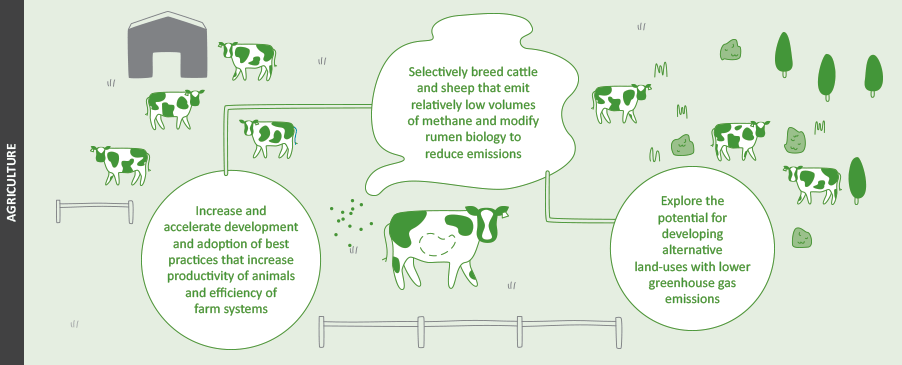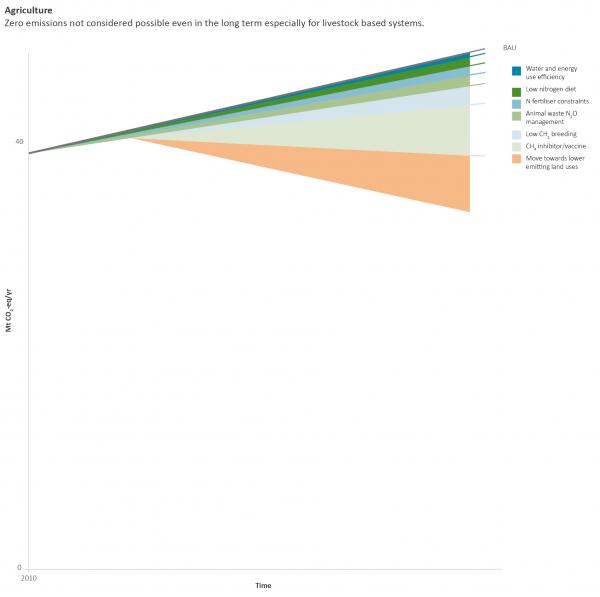Agriculture
This section covers mitigation options for agriculture. There are some opportunities to reduce green house emissions in this sector:
- Increasing adoption of best practices can help reduce the present growth in emissions, but even if current research into additional mitigation technologies proves successful, strong reductions in absolute emissions would eventually involve trade-offs with current growth targets for livestock production and would rely on developing alternative low-emitting land-uses.
- Some measures to reduce emissions could also support water quality.
In pictures

- Actions we can take in the agriculture sector now towards a low-carbon future for New Zealand

- Approximation of potential emission reductions in the agriculture sector
Key findings
- Direct emissions from agriculture make up almost half of New Zealand’s gross GHG emissions.
- Emissions per unit of product (or emissions intensity) have fallen consistently over the past two decades owing to increased productivity per animal and improved energy efficiency of farm enterprises, showing it is feasible to reduce GHG emissions if increased productivity were to be counterbalanced by decreased animal numbers such that food production is maintained.
- Nonetheless, absolute emissions have grown because of an increase in total production, largely due to increased use of land for dairy farming and its more intensive management regime.
- Further productivity increases will reduce future emissions intensity further, but absolute emissions will continue to rise in the absence of significant policy change or permanent depression of commodity prices.
- While there are mitigation options that can be used now, most only result in small additional GHG emission reductions above business as usual trends for current agricultural and horticultural systems, although some may also offer significant co-benefits such as improved water quality and more efficient water use.
- Research on, and investment in, new mitigation technologies to address, specifically, the formation of methane in the rumen and the decomposition of animal excreta in soils, offers the potential for significant future emission reductions. However, even with such technologies being developed and deployed widely, it appears very difficult to reduce total on-farm emissions below recent levels if production continues to increase strongly, as projected in business as usual scenarios.
- Exploration of alternative land-uses to reduce GHG emissions from the agriculture sector and taking into account climate change and carbon constraints as well as other economic, social and environmental objectives, would have a major impact on reducing emissions in the long term, and is essential if New Zealand wishes to reduce agricultural emissions below 1990 levels by mid-century.
Read the summary
- Agriculture, p16
Read the report
- Agriculture, p131
- Where do agricultural GHG emissions come from?
- Global GHG emission trends for the sector
- GHG mitigation options
- Case studies
- Influence of long term ambitions on near term actions and pathways
- Co-benefits
- Insights on enabling policies
- Knowledge gaps
